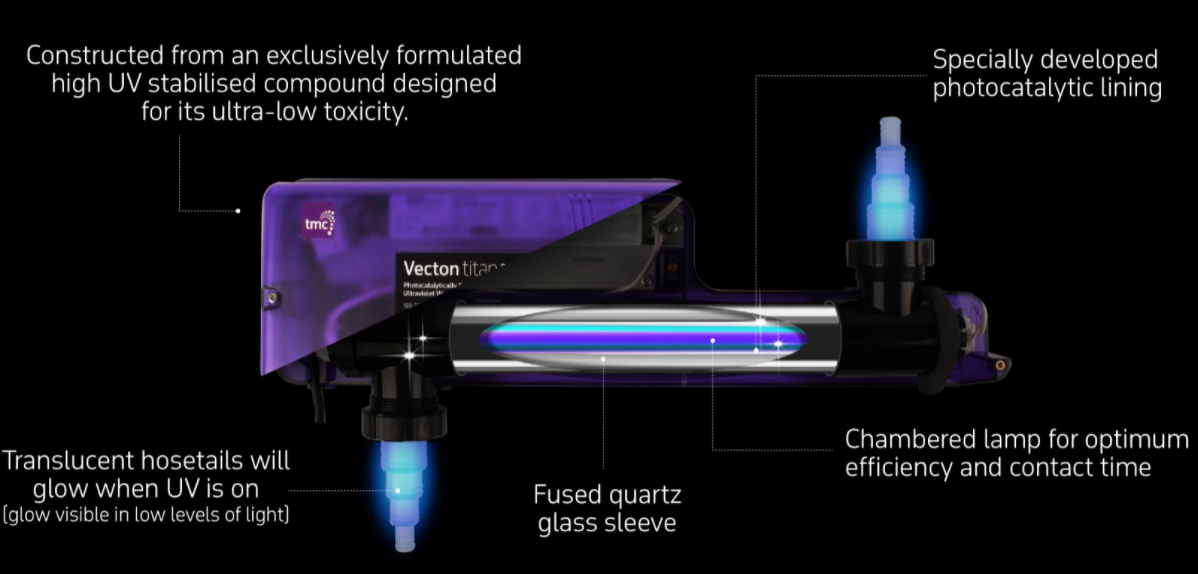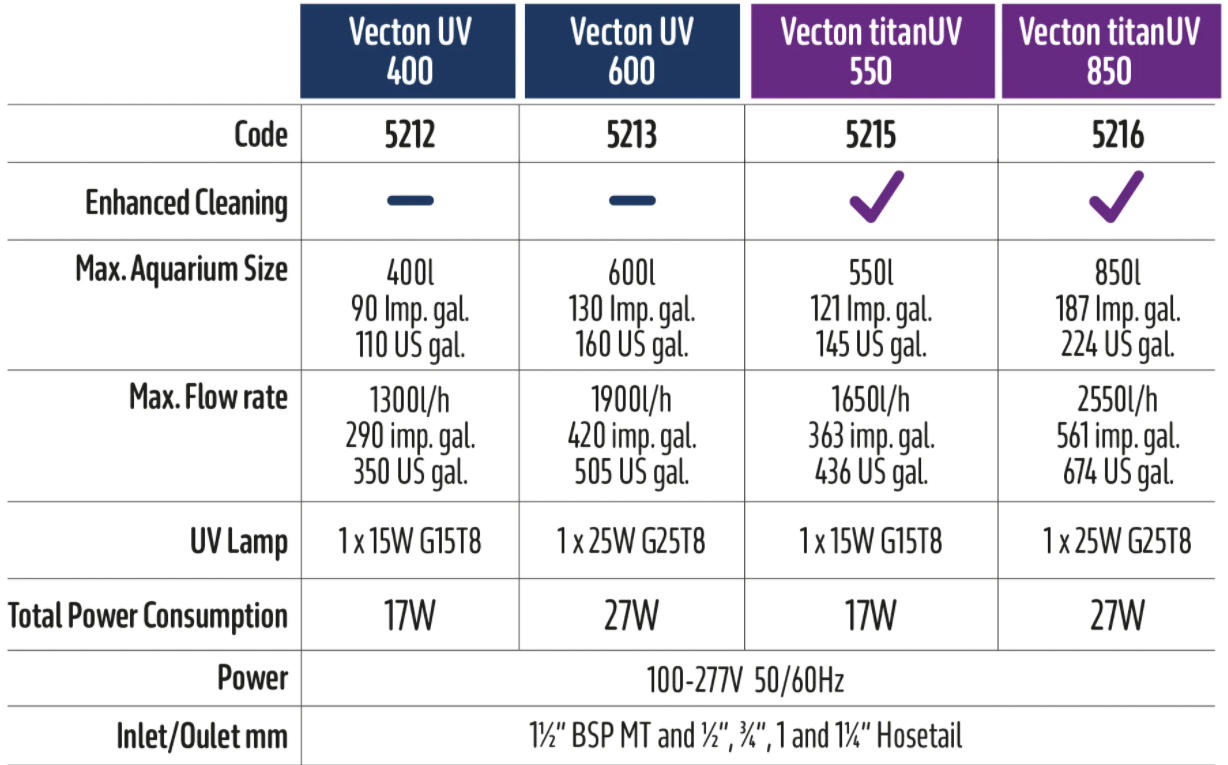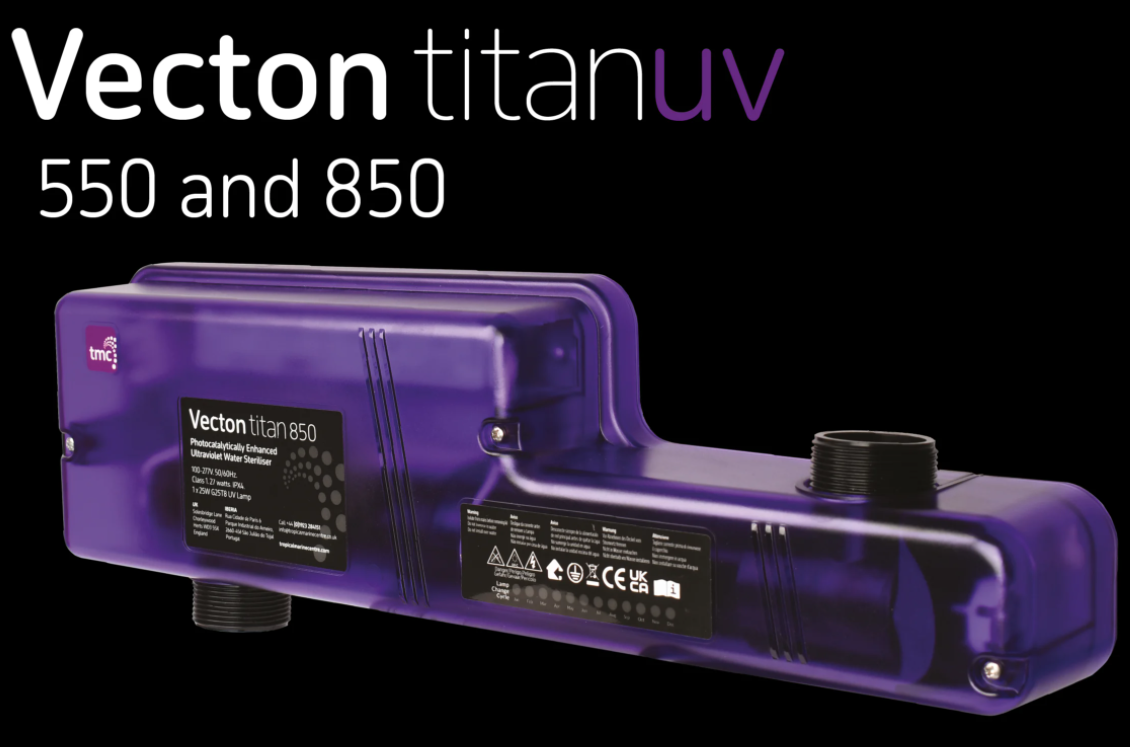Tropical Marine Center has this week introduced some interesting technology to its Vecton range of aquarium UV sterilizers. Named Vecton TitanUV, the two new 550 and 850 models use exactly the same 15 and 25-watt T8 germicidal lamps as the existing Vecton 400 and 600 models, but now claim a 30% performance increase versus before.
The increase in kill rate comes by way of a titanium-based lining material that acts as a photocatalyst and produces hydroxyl radicals when the UV-C hits it. The photocatalyst sleeve we believe to be Titanium dioxide, which absorbs light to raise it to a higher energy level, then provides that energy to a reacting substance to make a chemical reaction occur.
The result is oxidation – which then further degrades and decomposes dyes, odors, viruses, and bacteria on top of what the UV bulb is already doing. And the material is even self-cleaning. This technology has been the sole domain of TMC’s commercial TitanUVs over the past two years but we’re glad to see it come in a format that lay-reefers can get their hands-on and that it’s also seen extensive field testing.
Titanium dioxide looks to be a bit of a miracle product too, its oxidative potential capable of cleansing air and water and being able to split water into Hydrogen and Oxygen, leaving the Hydrogen collectible as fuel. We’ll definitely be seeing a lot more of this inorganic compound in the future. So which unit now has the better kill rate? An old Vecton 600 for 159 gallons or a new Vecton 550 for 145 gallons? TMC says the 600 model still kills slightly more, only the new 550 is close (hence the volume recommendation,) but does it for just over half the energy consumption.
The 550 and 850 should also have other benefits (according to the manufacturer,) such as clearer water due to the oxidizing effect of organics and other pollutants, and further protection of the UV stabilized plastic, which extends the life of the body.

It’s all about the kill rate
In UV sterilization it’s all about the kill rate, as we want to harness the damaging effects of 254 nm UV-C to eradicate as many unicellular algae and disease pathogens as we can. Generally speaking, the slower the flow through the unit, the higher the contact time, the higher the kill rate. With tiny viruses being quite easy to zap and larger parasites being more difficult, hence the need to send them slowly past the bulb so they get burned for longer.
But TMC says that with the Titan technology the reaction means that there is an increase in intensity at the outer edge of the body annulus, which boosts the kill rate, allowing for higher corresponding flow rates (per watt,) than the Vecton 400 and 600 models too.
The Vecton chassis remains the same with the convenient north and south inlet and outlet for ease of inline vertical plumbing from the sump. But for Titan, the chassis color changes from blue to purple (to match the Reef Pump Connect,) and the inner pipework changes from white to a much more menacing black.
Aquarium sterilizer technology has advanced little in the last 30 years, despite being the go-to parasite control on nearly all commercial aquaculture systems. Ballasts have gone electronic but T8 tubes are still widely used and the Unicorn that is LED UV-C still alludes our market.
So it’s encouraging to see an advance in TMC’s unit capabilities to kill more stuff, but at higher flow rates and for less energy than before. And the science behind Titanium dioxide and UV definitely checks out. Let’s hope we can all kill more parasites and have clearer water as a result.




